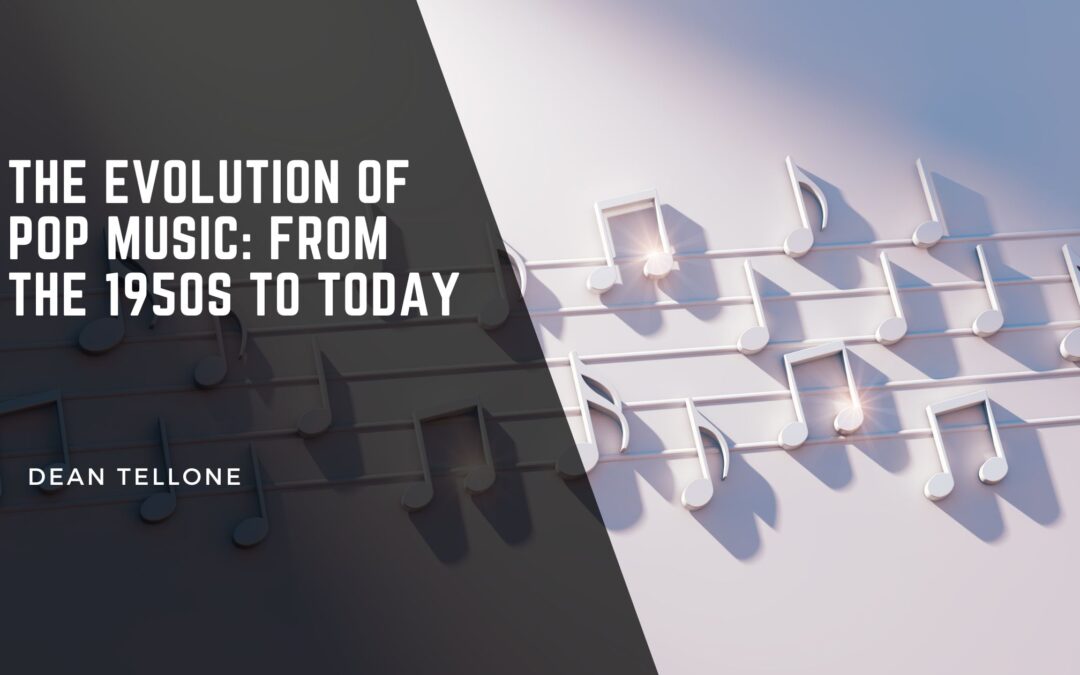Pop music, short for “popular music,” has been a dominant force in the industry for decades. Its evolution from the 1950s to today reflects broader cultural, technological, and social changes, making it a mirror of the times. From the early days of rock ‘n’ roll to the contemporary digital era, pop music has continuously reinvented itself, capturing the hearts and minds of listeners around the world. Here’s a look at how pop music has evolved over the past seven decades.
1950s: The Birth of Rock ‘n’ Roll
The 1950s marked the birth of rock ‘n’ roll, a genre that would lay the foundation for modern pop music. Artists like Elvis Presley, Chuck Berry, and Little Richard brought a new sound that blended rhythm, blues, country, and gospel. This era was characterized by energetic performances, catchy melodies, and a rebellious spirit that resonated with young audiences.
Rock ‘n’ roll’s rise coincided with the advent of television and the emergence of the teenager as a distinct cultural identity. The music of this era was not just about the sound; it was also about style, attitude, and the sense of freedom that came with it.
1960s: The British Invasion and Motown
The 1960s saw the explosion of pop music into a global phenomenon, driven by the British Invasion and the rise of Motown. The Beatles, The Rolling Stones, and other British bands took the U.S. and the world by storm, bringing with them a fresh, innovative approach to music. Their influence extended beyond music, fashion, culture, and politics.
At the same time, Motown, founded by Berry Gordy in Detroit, introduced a new sound that blended soul, R&B, and pop. Artists like The Supremes, Marvin Gaye, and Stevie Wonder became household names, and Motown’s polished production style set the standard for pop music.
1970s: Disco, Funk, and the Singer-Songwriter Movement
The 1970s were a diverse decade for pop music, with disco, funk, and the singer-songwriter movement dominating the charts. Disco, with its danceable beats and glamorous style, became a cultural phenomenon, epitomized by artists like Donna Summer, the Bee Gees, and Chic. Funk, led by artists like James Brown and George Clinton, brought a groove-oriented, rhythmic style that influenced pop music’s development.
Simultaneously, the singer-songwriter movement, featuring artists like Carole King, James Taylor, and Elton John, focused on introspective, personal lyrics set to melodic pop tunes. This era emphasized the importance of the artist’s voice and storytelling in pop music.
1980s: The Rise of MTV and the Superstars
The 1980s were defined by the rise of MTV, which revolutionized the music industry by turning music videos into a crucial part of an artist’s success. Visuals became as important as the music itself, and artists like Michael Jackson, Madonna, and Prince became global superstars, using the medium to create iconic images that still resonate today.
This era also saw the advent of electronic music, with synthesizers and drum machines becoming central to pop production. The 1980s were a time of bold, eclectic sounds, from the new wave to synth-pop, and a period where pop music truly became a global language.
1990s: The Era of Boy Bands, Girl Groups, and Hip-Hop
The 1990s saw the resurgence of boy bands and girl groups, with acts like *NSYNC, the Backstreet Boys, and the Spice Girls dominating the charts. Their catchy hooks, coordinated dance moves, and massive fan followings defined the decade’s pop scene.
At the same time, hip-hop began to emerge as a dominant force in popular music. Artists like Tupac Shakur, Notorious B.I.G., and Missy Elliott brought hip-hop into the mainstream, influencing pop music’s sound, style, and attitude.
2000s to Today: Digital Revolution and Genre-Blending
The 2000s and beyond have been marked by the digital revolution, which has transformed how music is produced, distributed, and consumed. The rise of the internet, streaming platforms, and social media has democratized music, allowing independent artists to reach global audiences without traditional industry gatekeepers.
This period has also seen the blurring of genre boundaries, with pop music increasingly incorporating elements from hip-hop, electronic music, R&B, and even country. Artists like Beyoncé, Rihanna, and Taylor Swift have exemplified this genre-blending approach, while new stars like Billie Eilish and Lil Nas X continue to push the boundaries of what pop music can be.
Conclusion
The evolution of pop music from the 1950s to today reflects the dynamic and ever-changing nature of popular culture. As technology, society, and tastes have evolved, so too has pop music, continually reinventing itself to stay relevant and resonate with new generations. Whether through the rebellious energy of rock ‘n’ roll, the glamorous allure of disco, or the genre-blending innovation of today, pop music remains a powerful force that captures the spirit of the times.

